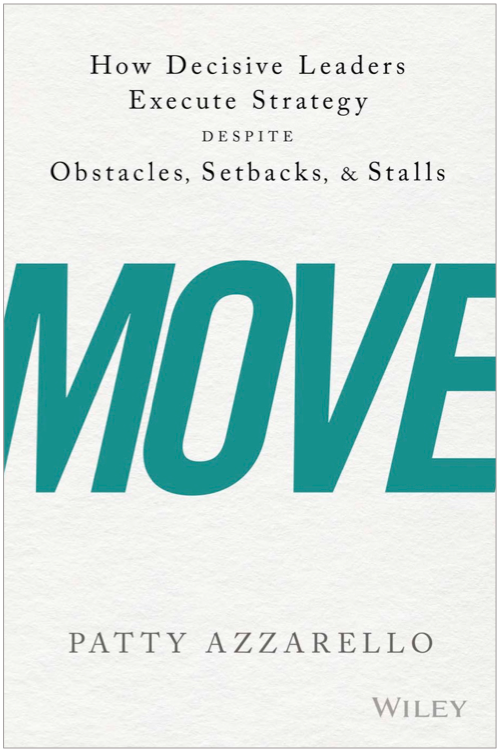Awhile back I wrote an article in my General Manager series called “Why people don’t do what you say”.
It had 10 steps for improving how you communicate with your organization.
Just as a quick summary, here are the 10 points:
1. Create an ongoing communication plan – important words “ongoing” and “plan”
2. Remember, they are not really listening
3. Set Context
4. Discuss what is NOT changing
5. Thank them for the work so far
6. Now…Tell them your content
7. Keep it simple
8. What is means to them, really, specifically
9. Communicate 21 times
10. Create a new social norm
All of those points are still useful, but today I want to expand on the #10 which is:
“Create a new social norm.”
Communication vs. Conversation
As I work with organizations to move their strategy forward and drive change successfully, I have been swapping out the word “communication” for “conversation”. There’s a big difference.
“Communication” is task, an activity.
Communication is about delivery – there is no guarantee that anything particular outcome has happened.
“Conversation” is a result.
Conversation is social — it’s about understanding and moving forward.
While it’s important for executives to communicate clearly and effectively, the delivery of the communication is not the important part.
The important part is to ask: Then what happened? Did any learning and sharing happen?
The necessary outcome
It’s funny, I typically find an inverse relationship between the level of emphasis an executive will use to say, “but I was very clear” and how much has actually be understood by the audience.
It’s never about how clearly you think you communicate. It’s about what happens next, and over time, with all the people involved.
Here is the measure…
You have communicated successfully when the people in your organization are conversing about your message amongst themselves.
When you can approach an employee at any level at random and ask, what is the most important thing for us to be doing right now, and why? — and get the same answer most of the time — then you can say that your communication has been successful.
For example, when I led a big, strategic, transformation in the HP OpenView software business in the 2000’s, I knew it was working when 1) A customer described our new strategy to and editor and it was quoted accurately in the press, and 2. A sales engineer in a remote part of europe presented the strategy to a visiting colleague of mine who relayed it back to me.
The conversation was happening whether or not I was there.
The trick — get people to care personally
To get people to care you need to go beyond communicating and fuel and support them having the conversation on their own.
Here are a few ideas I have seen work miracles in this matter.
1. Blogs.
For any strategy, initiative, or big idea that you want everyone to understand, get someone blogging internally about it. Pick someone who has the interest and the knack for it. Then don’t overload the process. Make sure they know it’s not about perfect writing and publishing — It’s about sharing the most interesting ideas and decisions. It can just be bullets. Not fancy, it just needs to exist. You will find interested parties commenting, and discussions happening in a very organic way. This is a big win.
2. Ritual.
I understood the strategy and all I got was this lousy T-shirt.
Don’t skip the T-shirt! …or the water bottle, or the laminated ID card. Pick a couple of people within the organization to select a fun or interesting artifact that your culture will like, and use it to “decorate” the change. When people walk around and see that these things are all over the place, it helps to show you are serious and this is really what we are doing. The fact that it does not come from the top down helps to make it not look lame.
3. Brown bags, informal gatherings.
Be on the lookout for bright spots in the organization where the organization is doing the right thing. Ask that person or team to host a brown bag lunch and share how they did it. Recognize the effort. Celebrate the brave people who are the first ones to implement the change.
4. Celebrate the program success.
Don’t let real progress and finished milestones pass un-celebrated. Even if it’s ringing a bell (or the technology equivalent) that everyone can hear when the right kind of deal closes, or the next group implements the new system successfully. Find a way to let people know that you are having small victories along the way. And don’t forget to celebrate big victories.
5. Make sure your executive staff is aligned.
One way to shoot this whole process in the foot, is if your management team is not seen by the whole organization as communicating and supporting the same things.
Even if they really do agree, if they are not all sharing that in a visible way, and joining the conversation, those silences and differences will spread skepticism and distrust faster than anything you can do proactively on what you are communicating.
Make it a managed plan to make sure that your organization is hearing from your whole management team.
In my experience, this in itself is worthy of fueling conversation across the team. “Wow, they are all saying this same thing”! This won’t happen unless you do it on purpose.
Conversation = forward movement in the business
The strongest and most productive organizations I work with, engage their people in the planning, the communicating, and the success. They share knowledge regularly. It has become the habit of the organization, and the change they are driving has become part of the social fabric.
Communication is still important from the top down, but it’s done is such a way that it spreads laterally, naturally.
One of the most important things you can do as a leader is foster sharing of information and get your team talking about what is most important to your business — even when you are not there.
What has worked for you?
If you have examples of turning communication into conversation that has worked in your organization, please share what you did in the comment box below.
Was this useful?
If you found this article useful, please help me share it with others and encourage them to subscribe to this Blog for free.
About Patty
Patty Azzarello is an executive, best-selling author, speaker and CEO/Business Advisor. She became the youngest general manager at HP at the age of 33, ran a billion dollar software business at 35 and became a CEO for the first time at 38 (all without turning into a self-centered, miserable jerk)
She is a regular contributor to Fast Company and was featured in Forbes Magazine in a column called Women We Love.
You can find Patty at www.AzzarelloGroup.com, follow her on twitter or facebook, or read her book RISE…3 Practical Steps for Advancing Your Career, Standing Out as a Leader, AND Liking Your Life.




